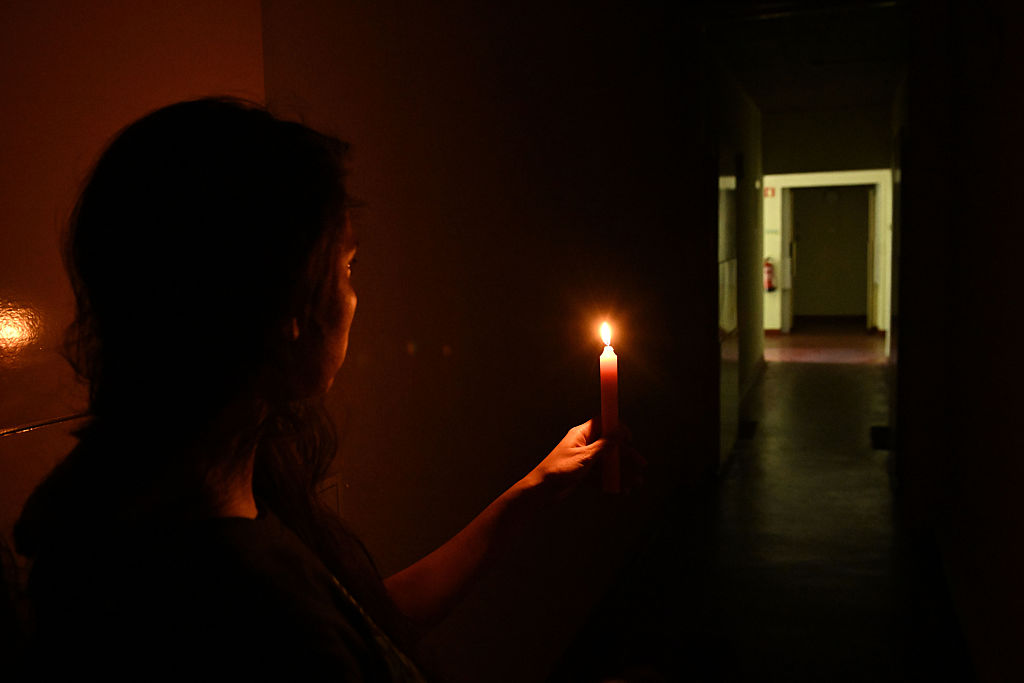As much of the U.S. faces three-digit temperatures this week, power outages have already been reported in several states, including New York, New Jersey, Pennsylvania, and Ohio.
If you find yourself facing a power outage during an extreme weather event, there’s many things you can do to get through it comfortably—but the most important thing is to plan ahead.
[time-brightcove not-tgx=”true”]
“My hope is that people think about this before the power shuts off,” says Joan Casey, professor of public health at the University of Washington.
Understand the Extent of the Power Outage
There are two types of power outages: rolling outages and unplanned outages. Knowing which type you’re facing can better help you allocate resources. Rolling outages are planned by electric companies, and are often preempted with warnings. “If it’s a rolling outage, and you know what’s coming, there’s a lot of things you can do to [be prepared],” says Susan Clark, assistant professor of environment and sustainability at the University of Buffalo. If you know ahead of time that your neighborhood might be facing a planned blackout, you can plan ahead to make sure you charge necessary devices or refuel your generators.
Unplanned outages might require a little more time for the grid to get up and running again. That’s why experts say it’s important to have emergency supplies at the ready.
“Best practice is to have three days worth of supplies,” says Clark.
Have Supplies Ready
Keep supplies like flashlights, portable chargers, and batteries on hand, along with three days’ worth of food, water, and any medication you might need. If you use a generator, make sure you know how to operate it safely— never use it indoors and be aware of the dangers of carbon monoxide poisoning.
Health guidelines recommend having one gallon of water per person per day in the event of an emergency—and plan to have more in case of extreme heat. Most homes will have access to water in the event of an outage, but there are some exceptions to consider.
“Where you get in trouble is a more rural setting, where homes are on well systems and maybe rely on an electric pump to pump the water into your home,” says Clark. “Those homes may have a limited amount of water, so having the water on hand is probably going to be really, really important.” If your home relies on a water pump, your toilet might be unable to refill after flushing and you could face a backup if you flush too frequently—consider using a generator or manual pump.
In the case of a wildfire, water quality can be impacted. Keep an eye out for boil notices—and make sure you have bottled water if you’re unable to operate your stove during an outage.
“Knowing what you’re vulnerable to where you live becomes really important, so that you know that you have the supplies that are appropriate to what you’re likely to face,” says Clark.
Plan for Health Needs
If you or someone in your household relies on electricity-dependent medical equipment, like a CPAP or oxygen concentrator, talk with your medical provider to put a plan in place in the event of a blackout.
“That’s something they’ll want to discuss with their medical providers,” says Casey. “Are there places they can go for backup battery charging in the event of a power outage? What’s their nearest hospital?”
By planning ahead of time, you can also work with your electric provider to make sure your house is prioritized for when power is reinstated. “In some cases, utilities will actually take written paperwork from those people and prioritize turning their power back on sooner,” says Casey.
Regulate Your Temperature
In the case of extreme heat, there are ways to stay cool that don’t involve AC or electric fans.
“It sounds pretty undesirable, but a wet t-shirt with cool water can actually really help keep your core temperature down when you don’t have any electricity,” says Casey. This trick is particularly useful for older adults, she adds. “As we age, our ability to sweat decreases, and so we don’t cool as effectively.”
Hand-held and battery-powered fans are useful too—but only to a certain extent. “When [indoor] temperatures rise above 95 to 100 degrees Fahrenheit, fans actually can be counterproductive and no longer help cool the body,” says Casey. As the New York Health Department website explains: “On very hot, humid days, sweat evaporates off the skin slower than normal, and fans make it even more difficult for the body to lose heat by sweating.” Instead, draw the blinds to keep sunlight out, and make sure you have cross-ventelation.
If your power goes out during a winter storm, have everyone stay in one room, and take advantage of sleeping bags or a fireplace if you have them.
Check in on your community
During extreme weather events, many areas offer community cooling and heating stations, often in libraries, malls, or fire stations, that you can visit if you’re unable to cope in your own home.
Check in on your neighbors, especially those that might be mobility impaired or elderly, and consider the ways you can help each other.
“Knowing your neighbors can be so important at any of these events, because you can share resources and keep each other safe,” says Clark.

